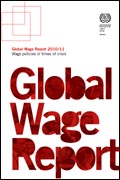Studies in this week’s Hutchins Roundup find that urgent care centers raise Medicare spending, U.S. banks were reluctant to draw down capital buffers to lend during the pandemic, and more.
Want to receive the Hutchins Roundup as an email? Sign up here to get it in your inbox every Thursday.
Opening new urgent care centers does not reduce Medicare spending
Do urgent care centers reduce the number of costly visits to hospital emergency rooms? Examining the rapid expansion of these centers between 2006 and 2016, Janet Currie and Anastasia Karpova of Princeton and Dan Zeltzer of Tel Aviv University say no. They find that total Medicare spending in zip codes with a new urgent care center increased relative to spending in zip codes without a center—without any change in mortality rates. Rather than substituting for emergency room visits or visits to a primary care doctor, the authors say, urgent care centers lead to a greater increase in inpatient hospital care, especially for elective care. Specifically, they find per patient spending rises by 4.2% six years after the opening of an urgent care center. Urgent care centers are increasingly owned by or contract with hospital systems; the authors suggest that incentives to funnel more patients into hospitals may be partly responsible for the increased spending on hospital care.
Banks avoided using their capital buffers to lend to small corporate borrowers during the pandemic
Regulations imposed after the 2008 Global Financial Crisis required banks to hold more capital (“regulatory buffers”) on top of minimum capital requirements so they could absorb losses and continue lending in downturns. Using supervisory loan-level data, Jose Berrospide, Arun Gupta, and Matthew Seay of the Federal Reserve Board find that U.S. banks were reluctant to dip into these buffers to lend to small and medium enterprises (SMEs) during the COVID-19 recession. The authors find that “buffer-constrained banks” (whose pre-pandemic capital ratios were close to the regulatory buffer region) were 1.4% more likely to reduce quarterly loan commitments to creditworthy SME firms and 4% more likely to terminate existing lending relationships than banks with capital ratios far from the regulatory buffer region. “Rather than seeing the buffers as a cushion to be drawn upon during a downturn,” as intended by regulators, “banks seem to be treating the regulatory buffers as additional minimum requirements,” the authors conclude.
US Black-white pay gap has remained wide due to differences in task compensation
The wage gap between Black and white U.S. workers narrowed between 1960 and 1980 but has been roughly constant since then. Erik Hurst and Kazuatsu Shimizu of the University of Chicago and Yona Rubinstein of the London School of Economics find that the evolution of the racial wage gap has been driven by changes in the tasks performed by Black and white workers and how tasks are compensated over time. During the 1960-1980 period, declining workplace discrimination allowed Black workers to participate more in tasks involving social interaction (e.g., customer service), which enabled them to make wage gains relative to their white counterparts. While the rise in Black people’s propensity to work in social tasks, all else equal, reduced the Black-white wage disparity by 8% between 1980 and 2018, underrepresentation of Black workers in jobs requiring analytical tasks (e.g., software programming) widened the gap by 7% over the same period. Rising compensation for abstract skills in recent decades has disproportionately benefited white workers, the authors find, offsetting the effect of declining racial discrimination on Black-white wage disparities. “It is becoming even more important today to equalize opportunities in early childhood to close the racial abstract skill gap,” the authors write.
Chart of the week: The number of Americans applying for unemployment benefits has fallen to its lowest level since the pandemic began
Source: The Wall Street Journal
Quote of the week:
“[A]s our economy has come roaring back, we’ve seen some price increases. Some folks have raised worries that this could be a sign of persistent inflation. But that’s not our view. Our experts believe and the data shows that most of the price increases we’ve seen are expected and expected to be temporary,” says President Joe Biden.
“The reality is, you can’t flip the global economic light back on and not expect this to happen. As demand returns, there’s going to be global supply chain challenges. We’ve seen that in semiconductors, which are used in automobiles. That global shortage has slowed vehicle production, creating a temporary spike in car prices. That’s a real challenge. And my administration is doing everything we can to address it. But again, these disruptions are temporary … My administration understands that if we were to ever experience unchecked inflation over the long term that would pose real challenges to our economy. So, while we’re confident that isn’t what we are seeing today, we’re going to remain vigilant about any response that is needed.”











Commentary
Hutchins Roundup: Medicare spending, capital buffers, and more
July 22, 2021